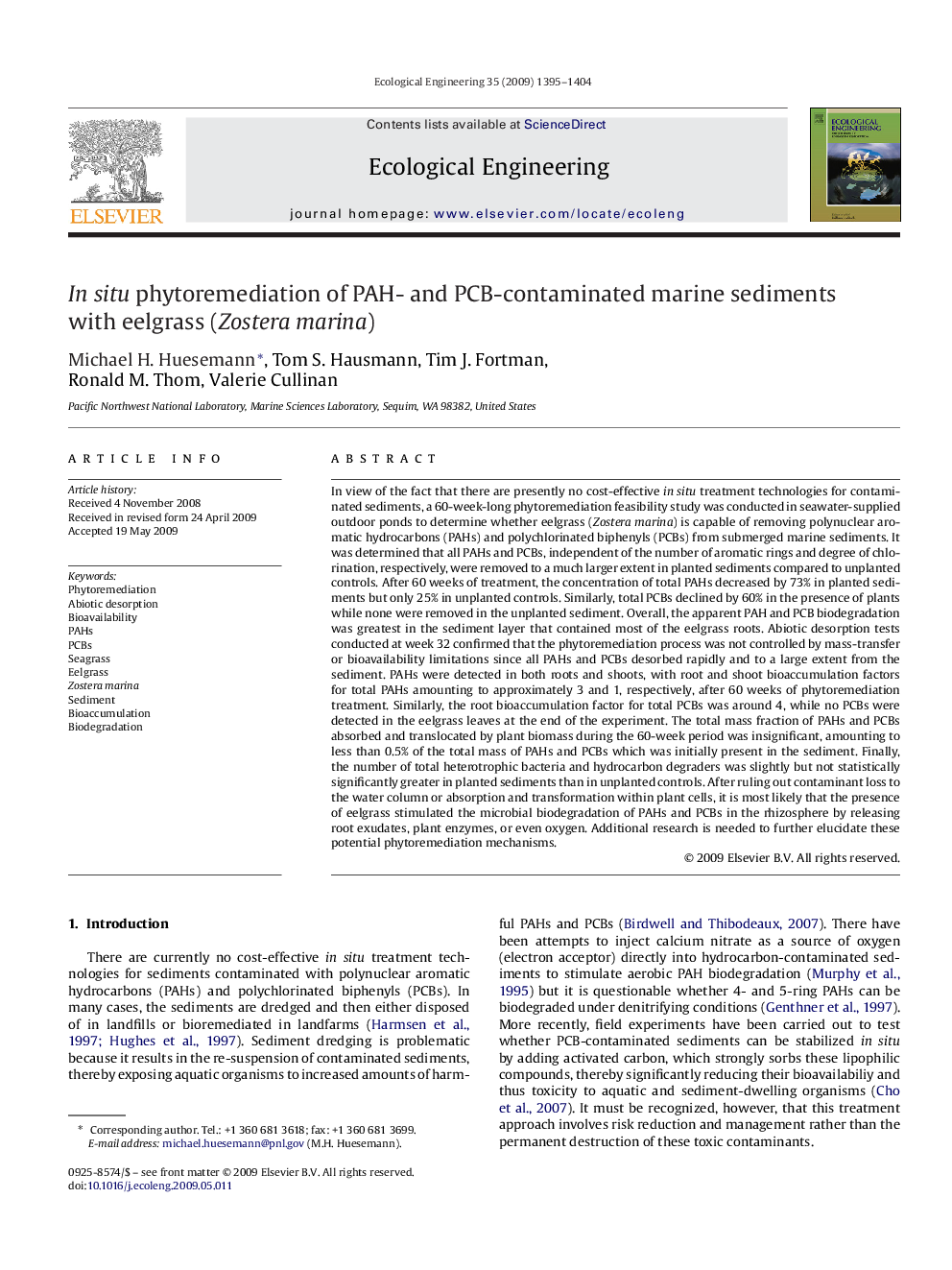| Article ID | Journal | Published Year | Pages | File Type |
|---|---|---|---|---|
| 4390716 | Ecological Engineering | 2009 | 10 Pages |
In view of the fact that there are presently no cost-effective in situ treatment technologies for contaminated sediments, a 60-week-long phytoremediation feasibility study was conducted in seawater-supplied outdoor ponds to determine whether eelgrass (Zostera marina) is capable of removing polynuclear aromatic hydrocarbons (PAHs) and polychlorinated biphenyls (PCBs) from submerged marine sediments. It was determined that all PAHs and PCBs, independent of the number of aromatic rings and degree of chlorination, respectively, were removed to a much larger extent in planted sediments compared to unplanted controls. After 60 weeks of treatment, the concentration of total PAHs decreased by 73% in planted sediments but only 25% in unplanted controls. Similarly, total PCBs declined by 60% in the presence of plants while none were removed in the unplanted sediment. Overall, the apparent PAH and PCB biodegradation was greatest in the sediment layer that contained most of the eelgrass roots. Abiotic desorption tests conducted at week 32 confirmed that the phytoremediation process was not controlled by mass-transfer or bioavailability limitations since all PAHs and PCBs desorbed rapidly and to a large extent from the sediment. PAHs were detected in both roots and shoots, with root and shoot bioaccumulation factors for total PAHs amounting to approximately 3 and 1, respectively, after 60 weeks of phytoremediation treatment. Similarly, the root bioaccumulation factor for total PCBs was around 4, while no PCBs were detected in the eelgrass leaves at the end of the experiment. The total mass fraction of PAHs and PCBs absorbed and translocated by plant biomass during the 60-week period was insignificant, amounting to less than 0.5% of the total mass of PAHs and PCBs which was initially present in the sediment. Finally, the number of total heterotrophic bacteria and hydrocarbon degraders was slightly but not statistically significantly greater in planted sediments than in unplanted controls. After ruling out contaminant loss to the water column or absorption and transformation within plant cells, it is most likely that the presence of eelgrass stimulated the microbial biodegradation of PAHs and PCBs in the rhizosphere by releasing root exudates, plant enzymes, or even oxygen. Additional research is needed to further elucidate these potential phytoremediation mechanisms.
